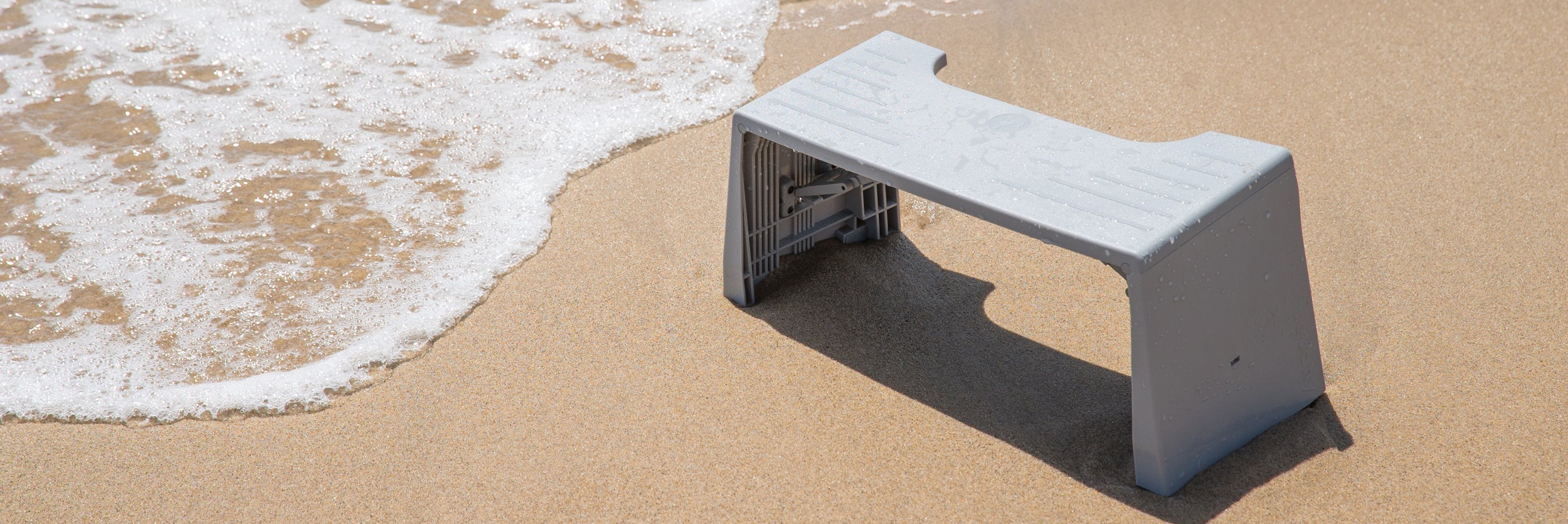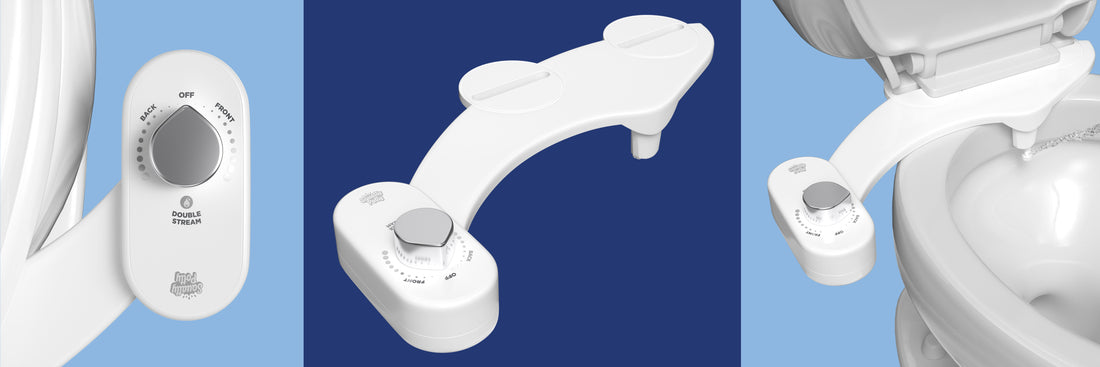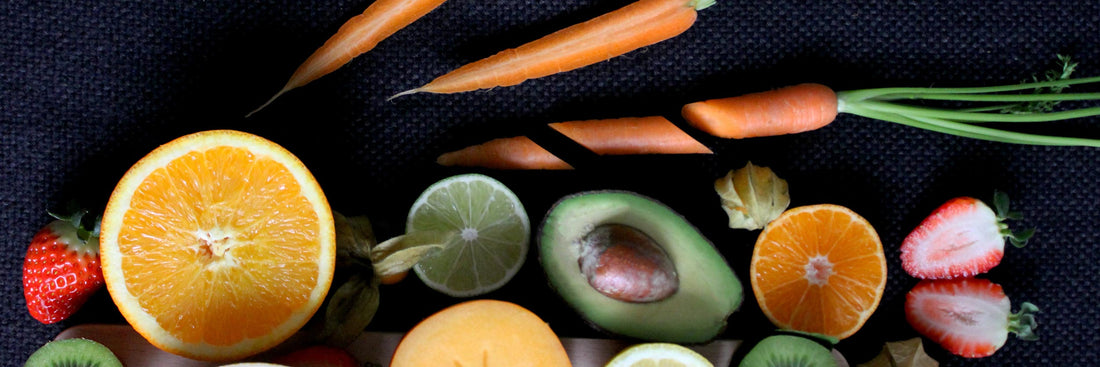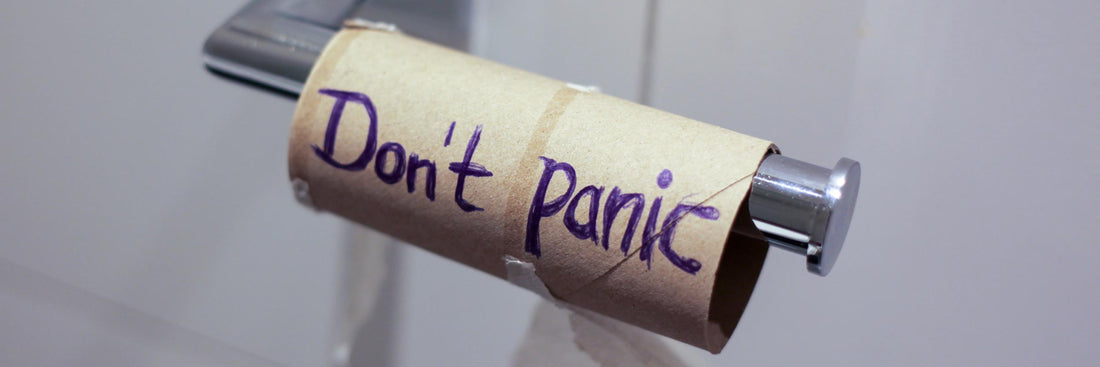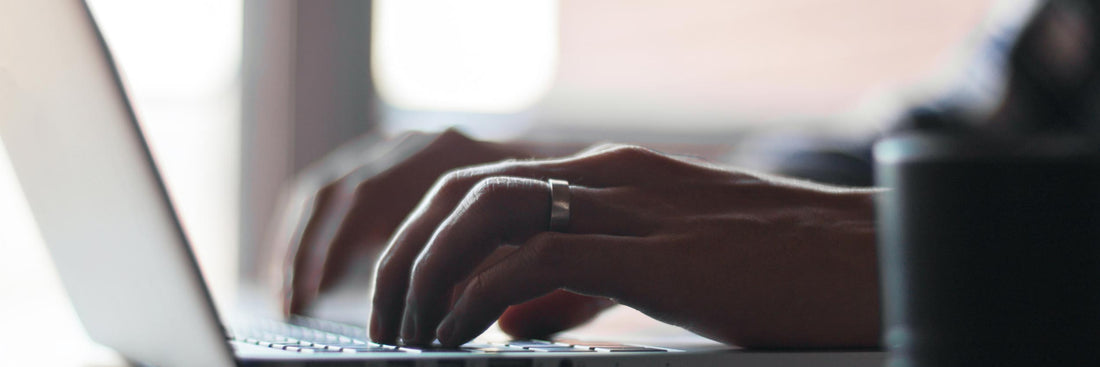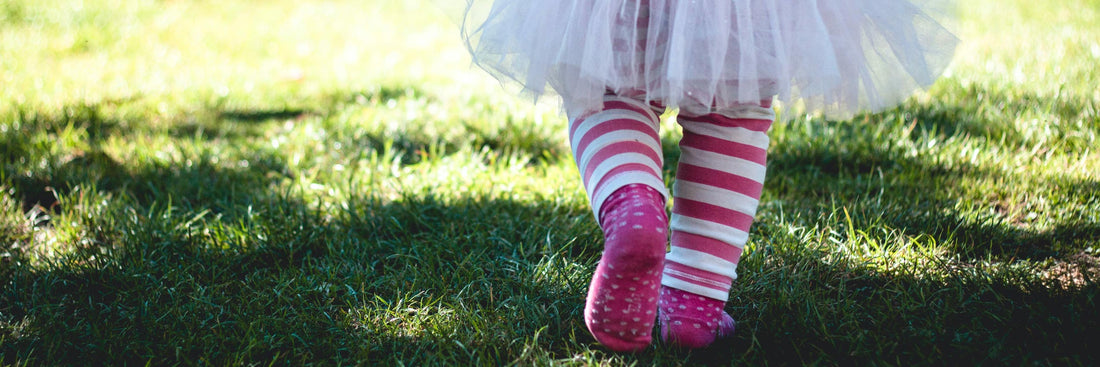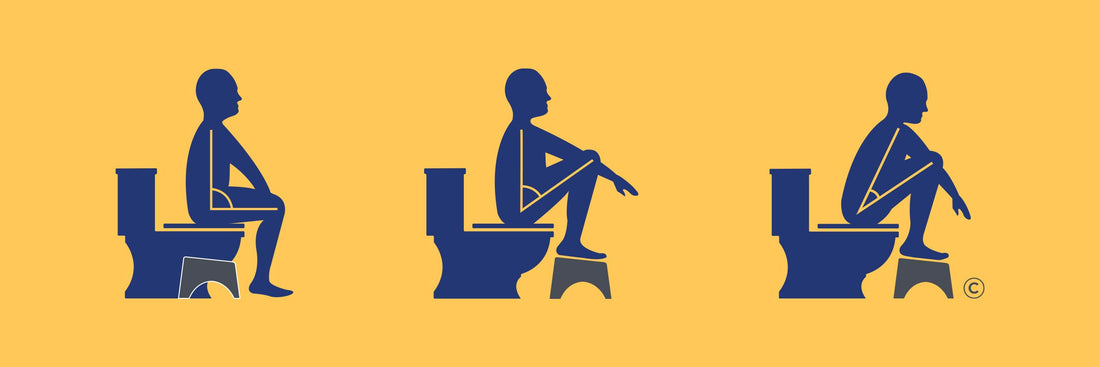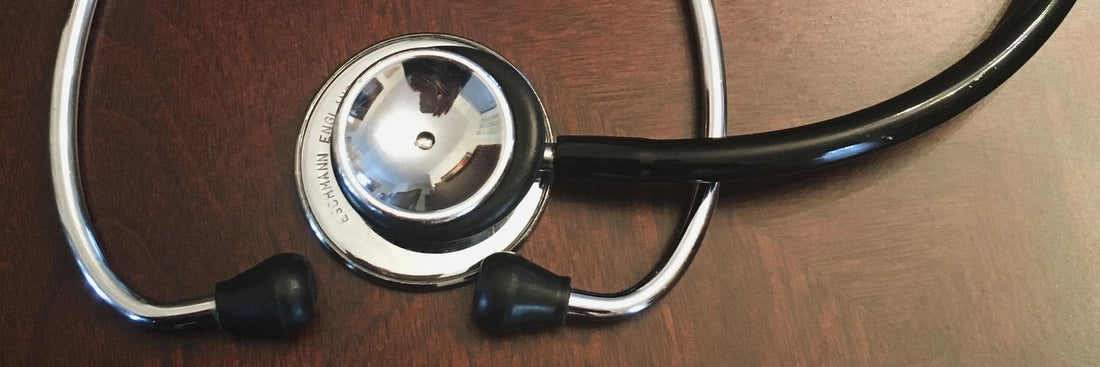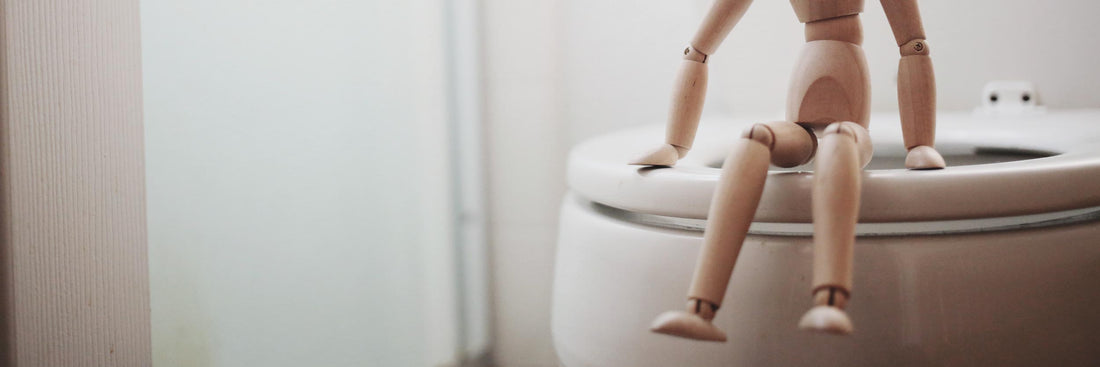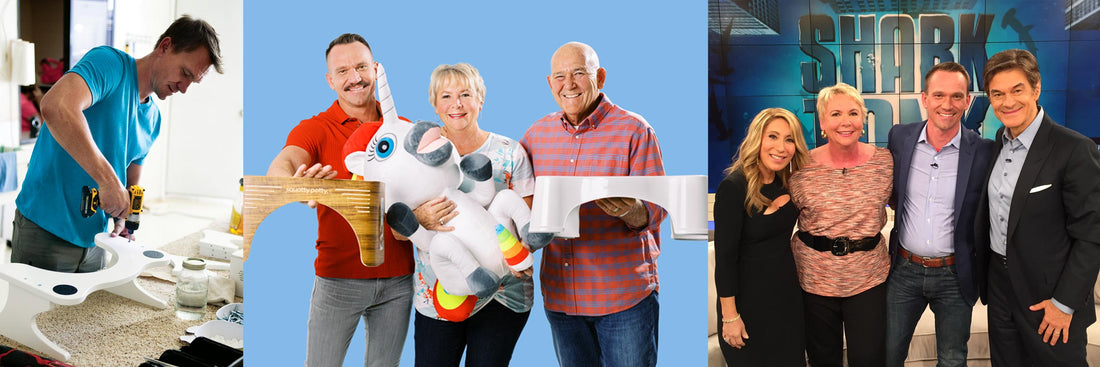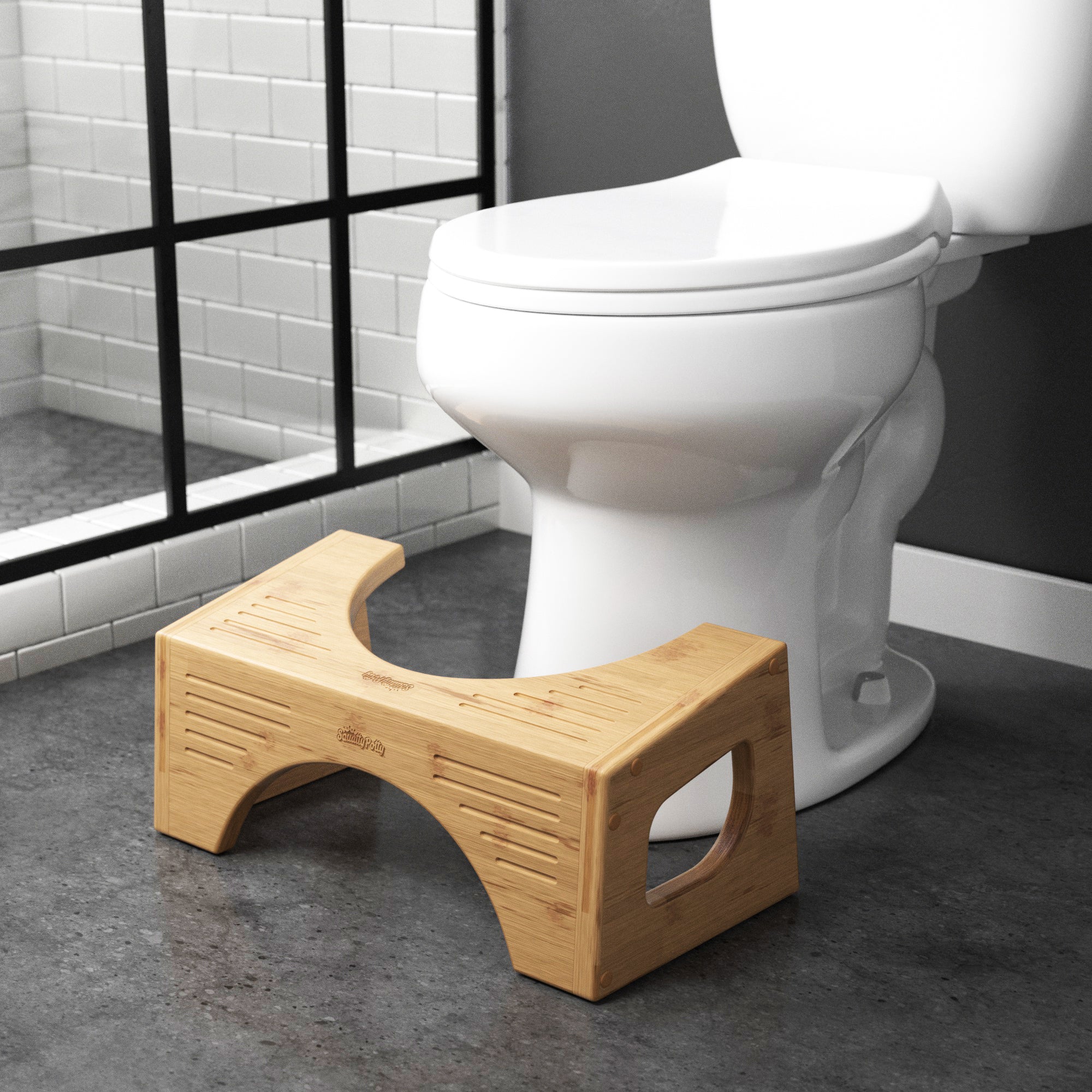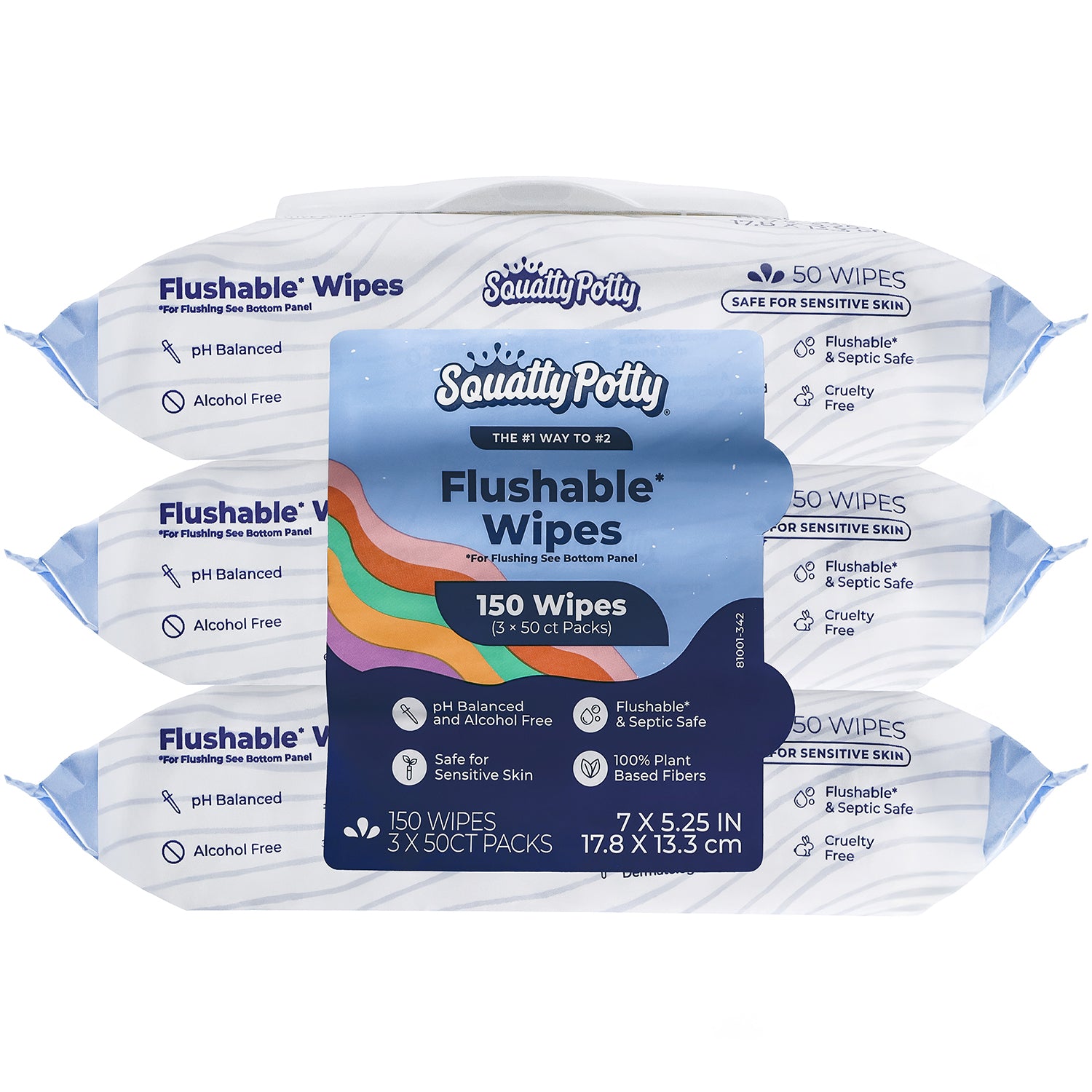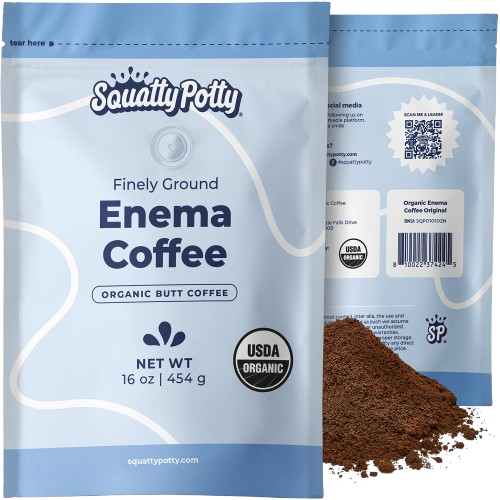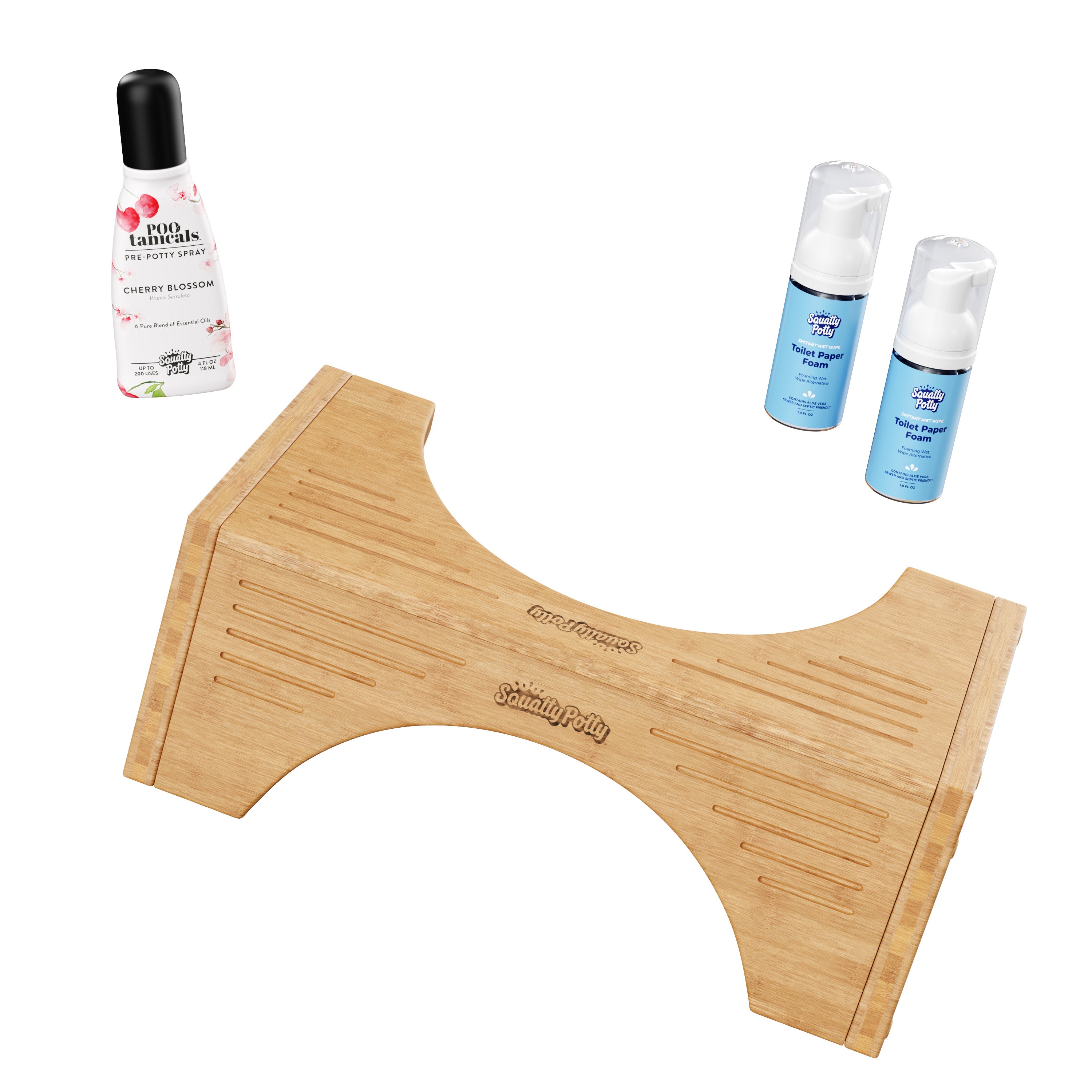Squatty Potty Blog
Why Bidet?
Whether it’s Bryan Cranston and Keegan-Michael Key in the 2016 hit comedy “Why Him,” Larry the Cable Guy as the voice of Mater (the Southern-accented tow truck from Radiator Springs) in 2011’s “Cars 2,” or Paul Hogan in the 1986 classic “Crocodile Dundee,” it’s hard not to laugh at the antics that ensue on screen when a bidet shows up at the movies. But the bidet (pronounced “bee-day”), which is said to have been invented by 17th century French furniture makers, is more than just a punchline or casual amusement. It’s essentially a bathroom sink for washing your bottom (or your derriere, if you want to stick with French) and other private parts. The device carries the same name as that used in France to refer to a small, stout pony. Why? Because early designs of the bidet required you to squat awkwardly over it during its use. Very popular in Southern European countries, particularly France, Italy, Spain, and Portugal, the bidet is growing in popularity in the U.S. and Canada. In the not-so-good-old days, bidets were exclusively standalone units, separate from the toilet, and they functioned much likes sinks. You’d squat over the bidet and splash water up to the areas that needed washing and subsequent rinsing. Modern designs provide a means to spray the water where needed. Some can even warm the water, and high-end models include air dryers. Although bidets were originally designed to be standalone units, separate from the toilet (another French-derived term, by the way), you can now find devices that convert a standard toilet into a dual-purpose toilet/bidet. Once such device is our ReFresh-It Bidet, which includes a small, built-in lever you can use to direct the stream of water to wherever you need it instead of having to shift and shimmy your way into position. Regardless of the make and model, all bidets have several common benefits, as we showcase in this post. Enhanced Hygiene If you get poop on your hands (or on any other part of your body), you don’t just wipe it off with toilet paper or a paper towel — you wash it, and you probably scrub it, with soap and water. But after doing our business, we often resort to simply wiping with paper. Some of us have stepped up our post-poop hygiene by using toilet wipes, which is certainly an improvement, but, unless you use the flushable variety, you’re left with an additional paper product that’s inconvenient and potentially embarrassing to dispose of. Besides, if you have a tender derriere, you’re well-advised not to use wipes that contain soaps, fragrances, alcohol, or other harsh chemicals. The bidet enables you to rinse off with plain water. Then, you can typically dry yourself with a single wipe or a few gentle pats. Economical You probably pay more for toilet paper than you realize, especially if you have a large family or someone in the family who uses a half roll simply to tidy up (every family has one). Using a bidet, you can slash your toilet paper bill. Think about it. If you pay $20 for toilet paper every month, that’s $240 a year. Trim your use by 75 percent, and you just saved yourself $180. That’s $180 you’re literally flushing down the toilet! Environmentally Friendly According to Southeast Green, the average American uses 50 pounds of toilet paper per year (57 squares daily). The average per capita use among Western European countries is about half that, and among the new European countries bordering the Baltic Sea, the average per capita use is only about 8.5 pounds — less than one fifth of that in the U.S. All the toilet paper you ultimately flush down the toilet requires cutting down trees to produce, and then it ends up as environmental waste via a sewage or septic system. Using less toilet paper saves trees and reduces waste. Easier on Your Bottom Tender, itchy bottom? Hemorrhoids? Anal fissures? Many doctors will offer the contradictory advice to clean more thoroughly, but wipe less and not as vigorously. They may recommend dampening your toilet paper prior to wiping (ever tried that? sheesh!) or suggest using water-based or natural baby wipes. The ideal solution? You guessed it — a bidet. With a bidet, your raw rump gets a thorough, yet gentle, cleaning. Easier on Your Toilet When’s the last time you had to take a plunger to your toilet? You can probably remember the day. People who use bidets can’t. It’s rarely the poop that clogs the toilet. More often than not, it’s the toilet paper. And with the increased prevalence of low-flow toilets, the problem has only gotten worse. Use less toilet paper, and you can do away with that ugly, bacteria-infested plunger you’re trying to hide behind the toilet, or at least relegate it to the garage, where you can reach it for the rare emergency — perhaps a less cultured guest who hasn’t been educated on the benefits of the bidet. Septic-Safe If you’re on septic instead of municipal sewer system, you probably fret about buying the right toilet paper and being careful about the other stuff you send down your pipes. Too much of the wrong stuff will destroy your system or at least upset its delicate balance and perhaps lead to the added expense of having your tank pumped more frequently. With a bidet, you still need to be careful to buy the right toilet paper, but you can significantly reduce the amount of it that ends up in your tank. Fun (or Funny) to Use When you first encounter a bidet, as Cranston’s character did in “Why Him,” you may think it’s a practical joke — having a stream of water squirted up your butt doesn’t exactly sound like a pleasant experience, especially if it’s a cold stream of water. Not only that, but if you’re not in the right place at the right time, you might just spray your face or one of the bathroom walls, as Hogan’s character almost did in “Crocodile Dundee.” Yes, a bidet can be loads of fun. If you have a funny story about your first encounter with a bidet, please post it here for all to enjoy. In addition to earning bragging rights for the best story posted, we’ll send a free Squatty Potty t-shirt and ReFresh-It Bidet to the person who contributes the best of the best.
Learn morePaleo Poopers: How to Deal with Caveman Constipation
You switched to a paleo diet — lots of veggies, a moderate amount of meat and eggs, a small amount of fruit for dessert, and perhaps some dairy. Good for you. You’re probably healthier than ever before. And now that you’ve gotten off the roller coaster of energy spikes and dips from consuming too much sugar and starch, you’re probably feeling better than ever. Trouble is, now you’re constipated. If this diet is healthier, why isn’t it making you poop healthier, too? And, more importantly, what can you do about it? What’s Causing My Constipation? Whenever you drastically change the way you eat, your body needs time to transition how it functions. With the paleo meal plan and lifestyle, the transition may be even more challenging, for several reasons: You’re switching your fuel source from sugar (and other simple carbs, such as bread and pasta) to fat. You’re probably eating less fiber, especially if you’re loading up on meat and not so much on vegetables or if you’ve switched to a low-carb paleo diet, avoiding certain fruits and vegetables, such as sweet potatoes. You’re probably consuming fewer calories, so you have less waste — less poop. What Can I Do About It? Fortunately, you can usually cure caveman constipation without giving up your paleo ways. The first step is to understand the composition of healthy poop: 75% water 7.5% undigested fiber and solidified components of digestive juices 7.5% bacteria 2.5% to 5% fat 2.5% to 5% inorganic matter .5% to .75% protein To alleviate your constipation, you need to give your body, and the microbes that reside in your lower digestive tract, the nutrients they need to produce the ingredients for healthy poops: Drink sufficient amounts of fluids. Water is best, but other fluids count, too. Diuretics, such as beverages containing caffeine and alcohol, may be counterproductive. Eat more plants than animals. If you’re loading up on meat, eggs, and dairy and ignoring veggies, fruits, beans, nuts, and seeds, try eating less of the former (animal-based products) and more of the latter (plant-based products). Plant-based foods contain the two types of fiber your body needs: Soluble fiber: Soluble fiber absorbs water and turns into gelatinous mush. It slows the absorption of sugar into your system, bulks up your poop, helps to eliminate toxic waste and maintain a healthy pH (acidity) in the intestines, and nourishes the beneficial microbes in your gut. (For more about feeding the friendly microbes, see our previous post, “Restoring Intestinal Flora Leads to a Healthy Gut and Happy Poop.”) Insoluble fiber: Insoluble fiber is found in vegetables, fruit and potato skins, seeds, and nuts. It retains a lot of water and helps to keep waste moving through the colon and to control and balance pH, but it’s largely un-fermentable, meaning it’s not the greatest food source for your friendly microbes. Take a probiotic. A probiotic consists of live bacteria that can restore or add to your friendly intestinal microbes. You can take a probiotic daily, but more importantly, take a probiotic for several weeks after taking an antibiotic. Probiotics are present in in some foods, including live-cultured yogurt, kefir, sauerkraut, kimchi, pickles, miso, and tempeh, and they’re available as supplements. Take a prebiotic daily. A prebiotic is soluble fiber that nourishes the microbes already in your digestive tract, in addition to delivering all the other benefits of soluble fiber. Prebiotics are contained in many foods, including beans, vegetables (especially Brussels sprouts, turnips, sweet potatoes, squash, and asparagus), fruits (especially apricots, grapefruit, oranges, and mangoes), nuts, and seeds. You can also buy prebiotics as supplements, typically psyllium. Make sure you’re getting enough potassium and magnesium. If you switched to a low-carb paleo diet, you may be avoiding some of the best sources of potassium, including bananas and sweet potatoes. Taking a good multi-vitamin that contains potassium and magnesium, both of which support motility (the contraction of muscles that mix and propel contents in the gastrointestinal tract), may help. However, avoid taking massive amounts of potassium or magnesium, because doing so can lead to imbalances that cause other health problems. Be patient. Give your body some time to adjust to the paleo diet and to any changes you make, including upping your fiber intake and taking a probiotic. A paleo diet is healthier than the Standard American Diet (SAD), but your body needs time to adjust. If you’re currently following a paleo diet or you tried it and decided it wasn’t for you, please share your experience and insights. Did it make you constipated? If so, what did you try to alleviate the constipation? What was most or least helpful? If you tried the paleo diet and then returned to a more “normal” diet, why did you switch back? encouragement, and information. Let us know how you approached this condition — what helped and what didn’t. Help shorten the journey from illness to wellness for others! – – – – – – – – Disclaimer: This blog post on the paleo diet provides general information and discussion about medical issues and health-related subject matter. The words and other content provided in this post, and in any linked materials, are not intended and should not be construed as medical advice. If you or any other person has a medical concern, consult with an appropriately licensed physician or other health care professional immediately and do not rely on the information presented in this post. Never disregard professional medical advice or delay in seeking it because of something you have read in this blog post or in any linked materials. If you think you may have a medical emergency, call your doctor or 911 immediately.
Learn more10 Tips for More Predictable Poops
Irregularity got you down? Do your poops seem to experience chronic flight delays? Do they get hung up in the morning’s rush hour traffic? Do they come out soupy one day and like adobe bricks the next? Well, we can help with that. Here we offer ten suggestions to achieving healthier, more predictable poops. It’s all about consistency — both in timing and texture. Follow these 10 suggestions, and you’ll be well on your way to poops that move down the tracks as smoothly as Japanese maglev trains. Start by Keeping Your Eyes on the Goal When we say “regular,” what does that mean, exactly? What’s normal? What’s healthy? Fortunately, doctors have been examining bowel movements and stool for millennia to diagnose illness. What have they concluded? Generally speaking, “normal” means pooping one to three times daily, and, according to traditional Chinese medicine (TCM), healthy stools are medium brown floaters with little or no sheen. Researchers at the Bristol Royal Infirmary — part of a dynamic and thriving group of hospitals in the heart of Bristol, England — have developed a more systematic gauge for judging the consistency of stools called the Bristol Stool Form or BSF scale, shown below. According to the BSF, stool types 1-3 are too hard, types 4 and 5 are just right, and types 6 and 7 are too soft. Unfortunately, the BSF doesn’t include anything about color, scent, or density (whether it floats or sinks), but it’s a pretty good gauge of whether you’re consuming enough water and fiber and whether you have some sort of intestinal infections or imbalances. So, if you’re pooping one to three times daily, and you’re squeezing out snakes or soft blobs, you’re in good shape. No need to change anything. On the other hand, if you’re pooping too often or less frequently than once a day, and if you’re laying bricks or squirting Hershey syrup, the following suggestions can remedy the situation. Use Common Sense: Listen to Your Body… and Your Doctor The suggestions we offer here are just that: suggestions. We are not your doctor, and we aren’t privy to details about your body, diet, lifestyle, and frequency or consistency of your poops. Tune in to what your body tells you. If you up your fiber intake, for example, and start experiencing loose stools, the added fiber may be doing more harm than good. Try different methods, choose what works, and ignore the rest. And always consult with your doctor over any serious or persistent problems. Consume Enough Fiber Hard poops typically indicate three problems. You’re not getting enough: Fiber (prebiotics) Water Probiotics Let’s start with fiber. According to the National Academies Institute of Medicine Dietary Reference Intake (DRI) for macronutrients, the average woman should be eating 21-26 grams, and the average man should be consuming 30-38 grams daily, depending on their age. Most people consume only about 15 grams of total fiber daily. You can boost your fiber intake by eating more high-fiber foods, including vegetables, fruits, nuts, legumes (beans), and whole grains. All of these sources of fiber contain water, so if you’re getting your fiber through food, you’re also boosting your water intake. Whether you need to take a fiber supplement is something to discuss with your doctor. Too much fiber can cause problems, as well, especially if you’re not consuming enough water. Drink Enough Water The standard advice on water consumption is to drink eight 8-ounce glasses of water daily; that’s 64 ounces, a half-gallon. According to the DRI, you need even more than that; women should be consuming about 2.7 liters (about three quarts) of water daily, and men should be drinking about 3.7 liters (just shy of a gallon). That’s a lot of water! Warning: Many people misinterpret that recommendation by failing to account for the water in foods and beverages. Water in juice, milk, coffee, tea, soda, and so on, also count toward your daily water consumption, as does the water contained in solid foods, including vegetables, fruits, nuts, whole grains, meat, cheese, and yogurt. Yes, drinking water is better for you than drinking soda, but if you’re struggling to drink a gallon of water daily, and you’re peeing all the time, you’re probably overdoing it. Supplement with Pre- and Probiotics Dry stools are often an indication of an imbalance of intestinal flora or gut bacteria and yeasts. These microorganisms in your intestines help to digest your food. They also retain the water that softens stool. An overgrowth of harmful bacteria, viruses, and fungi can interfere with digestion and cause a host of health problems that impact bowel movements or make the stool too hard or too soft. Prebiotics (dietary fiber) and probiotics (beneficial live bacteria and yeast cultures) can help restore a healthy balance. For details, see our recent blog post, “Restoring Intestinal Flora Leads to a Healthy Gut and Happy Poop.” Embrace the Foods That Bind If your stools are runny, consider a temporary shift to the BRAT diet: Bananas Rice Applesauce (not apples) Toast Other foods that can be helpful in alleviating temporary bouts of diarrhea are white bread, peeled potatoes, white pasta, rice, and peanut butter, but any bland, low-fiber foods can help to alleviate diarrhea. Avoid high-fiber foods, such as prunes, berries, cabbage, broccoli, beans, lentils, fatty meats, and greasy foods. Also avoid caffeine, alcohol, sugary drinks, and carbonated beverages. Although the BRAT diet is still recommended by some doctors, it’s only a temporary fix, and it is being phased out. Now, the Academy of Pediatrics recommends that children with mild diarrhea continue to eat a normal diet supplemented with commercially available electrolyte solutions to replace the water and salts lost during diarrhea. If diarrhea is severe or persistent or accompanied by a fever of over 102 degrees Fahrenheit, seek medical attention. Diarrhea can lead to dehydration, which poses a serious health risk. Embrace These Stool-Loosening Foods It’s common knowledge that certain foods, such as prunes, can help you poop, but prunes haven’t cornered the market. Here’s a list of 14 foods to help grease the ol’ poop chute: Beans Kiwi Sweet potatoes Corn and popcorn (poopcorn?) Nuts and seeds Whole grain breads and cereals Prunes, plums, pears, apples Berries Flaxseed Broccoli, green beans, spinach Dried fruit Coffee Yogurt Aloe vera juice And don’t forget the water! Put Your Body in Motion One sure fire way to cure constipation is to take a long jog to somewhere miles away from any toilet. As soon as you’re a safe distance from any convenient dropping point, you will have an uncontrolled urge to do your business. We don’t have any medical studies to support this phenomenon, only plenty of anecdotal evidence. It’s called the “runner trots.” But seriously, according to a study published in the Canadian Journal of Gastroenterology, regular physical activity, not necessarily an exercise regimen, can help with chronic constipation (CC), especially in older people who are less active. As for younger patients, the study concludes that exercise appears “to have little improvement in bowel function unless they engage in vigorous exercise.” The study goes on to state that “Exercise can still be recommended to patients because it improves quality of life and has other health benefits unrelated to CC.” Relax Stress is tough on your entire nervous system, part of which, the enteric nervous system (ENS), is devoted to controlling your digestive tract. For many people, stress contributes to constipation. For others, it gives them the collywobbles (stomach ache) and diarrhea. In an article posted on Harvard Healthbeat entitled “The gut-brain connection,” Editor in Chief Anthony L. Komaroff points out that “the gastrointestinal tract is sensitive to emotion. Anger, anxiety, sadness, elation — all of these feelings (and others) can trigger symptoms in the gut.” In fact, results of a study conducted at the Benson-Henry Institute for Mind Body Medicine at Massachusetts General Hospital (MGH), both Harvard affiliates, show that a nine-week training program that included elicitation of the relaxation response had a “significant impact on clinical symptoms of the gastrointestinal disorders irritable bowel syndrome (IBS) and inflammatory bowel disease (IBD) and on the expression of genes related to inflammation and the body’s response to stress.” (See “Genomic and Clinical Effects Associated with a Relaxation Response Mind-Body Intervention in Patients with Irritable Bowel Syndrome and Inflammatory Bowel Disease” published in PLOS One.) If you’re feeling stressed out and experiencing bowel irregularities, you may want to look into starting a relaxation regimen centered on yoga, mindfulness, tai-chi, or some other deep relaxation technique. Review Your Medications Experiencing chronic constipation or diarrhea? The root cause may be sitting in your medicine cabinet. Many medications can negatively impact digestion, including the little purple pill and its cousins, which are commonly prescribed for acid reflux (heartburn). If you’re having trouble pooping, we urge you to consult with your doctor, who can review your medications (both prescription and over the counter), and help you determine whether one or more of them may be the culprit(s). When You Gotta Go, Go! A busy schedule isn’t the most conducive for regularity. As a result, many people resist the urge to poop when at work or in public. If you’re part of this group, you need to figure out a way to answer the call of nature when it arrives. The fact is, holding it is bad for you. When you resist the urge to poop, your stool is held in your colon, where moisture is extracted from it, and it hardens, causing, you guessed it — constipation. Hold it too long, and your poop can become impacted, your colon can become distended, and its ability to contract impaired. The moral of the story — when you gotta go, go! Squat to Poop Your body is equipped with three muscles to help you choose when to take a seat on the porcelain throne… and when not to: The puborectalis muscle loops around the rectum like a sling, pulling the rectum forward to create a more acute angle between the rectum and the anal canal. When you stand, the muscle crimps the rectum to keep the poop in. When you sit, the muscle relaxes to a certain degree, but it only relaxes fully in the squat position. The internal sphincter is a smooth muscle controlled by enteric neurons — nothing you have any conscious control over. The external sphincter is a skeletal muscle that you can consciously control, as in when you decide to deliver the package. Whether you sit or squat, you consciously relax the puborectalis and external sphincter muscles, but only the squat position fully relaxes the puborectalis muscle to provide a straighter corridor through which your poop can travel. Lesson here? Squat to poop. And we can definitely help with that. Squatty Potty gives you the choice of simulating the squatting position or going full squat over your conventional toilet. The result: A quicker, fuller elimination of poop with little or no conscious effort on your part. Now we’re well aware that discussing poop in public is taboo, but we do it all the time anyway, and we encourage you to do the same… if you feel so inclined. Please share your poop problem and what you have done successfully, or not so successfully, to address the problem. It might just help someone else. – – – – – – – – Disclaimer: This blog post on predictable bowel movements provides general information and discussion about medical issues and health-related subject matter. The words and other content provided in this post, and in any linked materials, are not intended and should not be construed as medical advice. If you or any other person has a medical concern, consult with an appropriately licensed physician or other health care professional immediately and do not rely on the information presented in this post. Never disregard professional medical advice or delay in seeking it because of something you have read in this blog post or in any linked materials. If you think you may have a medical emergency, call your doctor or 911 immediately.
Learn moreeBay Buyer Beware
If you have spent any time shopping on eBay then you know what a mess their website can be sometimes. Well, that mess has now affected Squatty Potty, so we wanted to make sure customers are aware of the problem. Currently if you go to eBay and do a search for Squatty Potty you will see 350+ results. Several of the sellers listed are legitimate third party distributors offering genuine products. However, many are not offering authentic Squatty Potty toilet stools. To ensure you don’t get fooled into buying a knock off, it's best to order directly from Squatty Potty. If you did order from a third party seller and feel like you got ripped off with a counterfeit product, please be sure to contact eBay so they can remove fraudulent sellers. We apologize for any inconvenience and confusion this situation may cause. We’re just trying to look out for you!
Learn moreEncopresis 101 — Understanding Your Child’s Condition
Is your child regularly soiling his underwear even after being successfully potty-trained? If so, your family is probably suffering from one of the most embarrassing and tenacious conditions to afflict children — encopresis (en-kuh-pree-sis) — involuntary defecation — a condition that, left untreated, can follow your child into adulthood. If you’re a parent of a child with encopresis, you don’t have to imagine the psychological impact of encopresis on you and your child. You can’t send your child to school without dreading the possibility of your child passing stool in class or on the playground. You find excuses for your child not to go to friends’ houses for sleepovers. You dread answering the phone when your child is away from home, expecting it to be a call about your son or daughter having “an accident.” You see the frustration, anguish, and shame on your child’s face, as the harder they try to control their bowel movements the more they fail. To make the situation worse, encopresis is a condition nobody likes to disclose or discuss, so families often become increasingly isolated. If you do venture to discuss your situation, you become the cause — other parents unfamiliar with encopresis will assume that you did something wrong when potty training your child. You’re likely to get plenty of unwelcome parenting advice on how to reward your child when he uses the potty and how to enforce consequences when he soils himself — as if soiling oneself isn’t consequence enough! Even some doctors fail to fully understand the problem or provide parents the valuable understanding, insight, and guidance they need to meet the challenge. We’re here to help. Here we bring you up to speed on encopresis — symptoms, causes, and cures. Symptoms of Encopresis The most obvious symptom of encopresis is the soiling of oneself. Other symptoms, according to the Mayo Clinic, include the following: Leakage of stool or liquid stool on underwear, which can be mistaken for diarrhea Constipation with dry, hard stool Passage of large stool that clogs or almost clogs the toilet Avoidance of bowel movements Long periods of time between bowel movements Lack of appetite Abdominal pain Problems with daytime wetting or bedwetting (enuresis) Repeated bladder infections, typically in girls As we point out in a previous post, “10 Tips for More Predictable Poops,” normal pooping involves going one to three times daily and having semi-soft stools that are light brown in appearance. There’s actually a Bristol Stool Chart presented in that post to help you determine whether the consistency of your child’s stool is in the normal range. If your child isn’t having a normal bowel movement at least once a day, or is experiencing one or more of the symptoms described above, consult your child’s doctor for advice. What Causes Encopresis? The primary cause of encopresis is chronic constipation, and the longer a child remains constipated, the worse the condition becomes. At a certain point, the stool can become so impacted in the bowels that it will not move, and the mass continues to grow, stretching (distending) the bowel muscles to the point at which they can no longer contract effectively to push the mass out. The bowels and rectum, which are already lacking in the nerve department lose any “feeling” they have, so the child doesn’t even sense when she “has to go number two.” Softer stool descending through the bowels flows around the existing mass and leaks out, through no fault of the child, soiling the child and her clothes. Yes, it’s disgusting, and your child knows it, but she can do nothing to control it. But what caused the chronic constipation in the first place? Well, that depends. In some cases, a medical illness may cause or contribute to encopresis; hypothyroidism, Hirschsprung’s disease, diabetes, cystic fibrosis, spina bifida, and other illnesses have been linked to problems with colon function. In most cases, however, the cause of the chronic constipation is related to: Diet Sedentary lifestyle Medication Emotional/behavioral issues A combination of the four Diet It’s no secret that most kids these days eat more junk food than in generations past. Our hectic lifestyle leads us to eating more convenient, processed foods and less whole foods, and feeding these same processed foods to our children. Like adults, children should be eating more as nature intended — primarily a whole foods diet consisting mostly of vegetables, nuts, and fruits; some whole grains; and protein from quality sources. A focus on whole foods naturally reduces consumption of sugary foods and drinks (and diet products), simple carbohydrates, and processed foods, such as chips, cupcakes, mac & cheese, and fruit rollups. It’s all about establishing a consistently healthy, well-balanced diet. A diet that is overly restrictive can cause nutritional imbalances, but even too much of a good thing, such as cow’s milk and cheese, can contribute to constipation. Sedentary Lifestyle Many children lead active lives, but too many are overly sedentary, spending more time on their smart phones, watching TV, and playing video games than they do riding their bikes, jumping rope, exploring the great outdoors, and engaging in physical activities with friends. Healthy bodies require movement to keep muscles toned and blood flowing and to ensure proper digestion. If kids with encopresis simply matched every hour of sitting with a half hour of physical activity, they would be well on their way to avoiding constipation and achieving optimal health. Medications When you start researching encopresis, you find a lot of information about lack of fiber in the diet, dehydration, and behavioral issues, but you see very little in the literature about medications contributing to the problem. And the few medications cited may not be the biggest culprits. Several articles call attention to over-the-counter cold medications, antacids, anticonvulsants, chemotherapy, and narcotic pain medications as contributing to constipation, but none of the research we encountered pointed out what may be the biggest contributor of all — antibiotics. Parents know better. Many parents of children with encopresis report that their children were put on repeated trials of antibiotics to treat persistent ear infections and other infections prior to developing encopresis. Given the fact that antibiotics kill intestinal bacteria at the same time they kill the targeted infectious agents, and the fact that beneficial intestinal bacteria are an essential ingredient to healthy bowel function, we wonder what role antibiotics might play in triggering encopresis in children. We would like to see such a study conducted. If you know of such a study, please post a comment to share with our readers. Emotional/Behavioral Issues As we point out in a previous post, “Don’t Get Your Colon in a Knot: The Anxiety-Pooping Connection,” healthy bowel movements are often a case of mind over matter. The same is true for children. Thoughts and emotions may impact their ability to poop. Here are a few emotional/behavioral issues that may contribute to constipation: Stress in the family, at school, or among friends A change in bathroom routine, such as when a child starts or returns to school after a break The busy boy or girl syndrome, in which the child is too busy to take time to use the restroom Constipation and encopresis can result in additional emotional and psychological fallout, especially if the child doesn’t understand the condition and is blamed or blames herself for it. This is a highly stigmatizing condition. What Can Be Done to Cure Encopresis? Fortunately, encopresis can be cured in most cases, but it’s not unusual for full recovery to take a year or longer, especially if the bowel has been distended for some time. Bowel tone and function must be restored through changes in diet and lifestyle and through medical intervention. The first step is to see a gastroenterologist who can order x-rays and other tests to rule out or treat any medical conditions that may be at the root of the problem. Both the American College of Gastroenterology and WebMD have online physician directories that can help you get started. Regardless of the cause, the gastroenterologist is likely to recommend/prescribe: Increased fiber consumption Reduction or avoidance of constipating foods, such as cheese, or milk (if your child has an intolerance to milk) Increased water consumption A pre- and probiotic to restore intestinal flora (see our previous post “Restoring Intestinal Flora Leads to a Healthy Gut and Happy Poop“) Laxatives (perhaps heavy doses over an extended time) and enemas to keep the bowels clear Counseling to help with any stress that may have contributed to the encopresis or any emotional or behavior issues resulting from it Remember: The earlier treatment is started, the better the prognosis. Don’t let embarrassment stand in the way of your getting help for your child. Consult your child’s pediatrician or head directly to the nearest gastroenterologist for help. An Ounce of Prevention Encopresis is one of many illnesses that snowballs into a bigger problem when left untreated, so staying on top of your child’s gastrointestinal health is key to both treatment and prevention. You may be able to avoid ever having to deal with the problem if you invest in the following preventive care: Breastfeed, if possible. Breastfed babies generally have more and looser stools, producing anywhere from 5 to 40 bowel movements per week compared to 5 to 28 among formula-fed babies. Stock up on healthy foods, and clear the shelves of junk food. Encourage an active lifestyle to combat our culture’s sedentary lifestyle. Find a doctor who respects the pros and cons of antibiotics and prescribes them only when necessary. After your child completes a trial of antibiotics, re-inoculate your child with healthy intestinal flora by having her take a quality probiotic along with prebiotics. Consult your child’s doctor for details. Monitor your child’s frequency and consistency of poops. Obviously, you want to give your child some privacy at some point, but teach your child what’s normal — one to three snaky poops daily. Normalize discussion of poop, so your child will not hesitate to let you know when she’s having trouble. Healthy pooping is a key factor in your child’s health; don’t be squeamish. If your family trends on the more humorous side of life, consider reading “Pinching a Loaf and Other Poophemisms” for ideas on how to make the subject matter even more accessible. Transition your family from sitting to poop to squatting to poop. This more natural way of pooping enables everyone in the family to poop without pushing, it’s more fun, and it just may save you a ton of money on toilet paper! To all those parents and their children out there who struggled with or are currently struggling with encopresis, we feel for you. Please post a comment to share your journey with other parents out there who may need support, encouragement, and information. Let us know how you approached this condition — what helped and what didn’t. Help shorten the journey from illness to wellness for others! – – – – – – – – Disclaimer: This blog post on Encopresis provides general information and discussion about medical issues and health-related subject matter. The words and other content provided in this post, and in any linked materials, are not intended and should not be construed as medical advice. If you or any other person has a medical concern, consult with an appropriately licensed physician or other health care professional immediately and do not rely on the information presented in this post. Never disregard professional medical advice or delay in seeking it because of something you have read in this blog post or in any linked materials. If you think you may have a medical emergency, call your doctor or 911 immediately.
Learn moreSit, Squat, or in Between? How Body Position Affects Elimination
If you sit to poop, you don’t know squat about pooping. Squatting makes pooping easier and faster in the following four ways: In the squatting position, gravity does most of the work. The weight of the torso presses against the thighs and naturally compresses the colon. Gentle pressure from the diaphragm supplements the force of gravity. Squatting relaxes the puborectalis muscle, allowing the anorectal angle to straighten and the bowel to empty completely. Squatting lifts the sigmoid colon to unlock the “kink” at the entrance to the rectum. This kink also helps prevent incontinence, by taking some of the pressure off the puborectalis muscle. The colon is equipped with an inlet valve (the ileocecal valve) and an outlet valve (the puborectalis muscle). Squatting simultaneously closes the inlet valve, to keep waste from pushing back up into the small intestine, and opens the outlet valve, to allow wastes to pass freely out of the body. The sitting position defeats the purpose of both valves, making elimination difficult and incomplete, and increasing the risk of waste backing up into the small intestine where it should not be. For more about the potential hazards of sitting to poop, please see “5 Problems With Sitting On Your Toilet.” The Squatty Potty line of toilet stools enables you to simulate the squatting position using a standard sit-down toilet. In a way, it gives you the best of both worlds — the benefits of squatting with the comfort of sitting. But what’s really best: sit, full squat, or somewhere in between? The research is somewhat limited, but the evidence suggests that the optimal elimination posture is a relaxed position as close as possible to a natural squat. Studies Show Squatting to Poop Is Best One source of evidence that supports the benefits of squatting is from a Japanese study, “The Influence of Body Position on Defecation in Humans” published in the journal Lower Urinary Tract Symptoms (LUTS). For the purposes of this study, three positions were tested: Sitting Sitting with the hip flexed at 60 degrees with respect to the rest of the body (sitting with feet raised) Squatting with the hip flexing at 22.5 degrees with respect to the rest of the body For each position, researchers measured abdominal pressures, subtracted rectal pressures and anal sphincter pressures, and examined fluoroscopic images to compare the amount of strain required for elimination (i.e., defecation). Based on the results, the researchers concluded that “the greater the hip flexion achieved by squatting, the straighter the rectoanal canal will be, and accordingly, less strain will be required for defecation.” In other words, the closer you are to a full squat, the easier it will be to poop. In another study, “Comparison of Straining During Defecation in Three Positions: Results and Implications for Human Health” published in the Journal of Digestive Diseases and Sciences, Dr. Dov Sikirov had healthy volunteers ranging in age from 17 to 66 years old with normal bowel function use a digital timer to record the time needed for sensation of satisfactory elimination in three different positions: Sitting on a standard-sized toilet seat (41–42 cm high) Sitting on a lower toilet seat (31–32 cm high) Squatting Six consecutive bowel movements were recorded in each position. The average time for satisfactory elimination during squatting was 51 seconds, compared to the average times for the lower and higher toilet seats: 114 and 130 seconds respectively. Participants were also asked to note their subjective impression of the intensity of effort. Based on the results, Dr. Sikirov concluded that “the sensation of satisfactory bowel emptying in sitting defecation posture necessitates excessive expulsive effort compared to the squatting posture.” A third study, “Role of defecation postures on the outcome of chronic anal fissure” involved patients with signs and symptoms of anal fissures — tears in the thin, moist tissue that lines the anus, typically from passing hard or large stools. Patients were evaluated before and after changing their defecation postures — sitting, squatting, or a modified sit/squat position. What these researchers concluded is that the modified posture — sitting with feet elevated — was best, better than both sitting and squatting, for reducing and almost totally eliminating chronic anal fissure. Achieving a Fuller Squat For convenience and comfort, we recommend that you sit down, pull the Squatty Potty out to a comfortable distance, place your feet on the foot rests, and let nature (and your body) take it from there. However, if you are interested in trying a fuller squat, your Squatty Potty stool is very accommodating. Here are a few suggestions for achieving a fuller squat: Depending on your height, consider using a taller Squatty Potty — the 9-inch as opposed to the 7-inch. Some people are so tall, and their toilets so short, they practically can do it without the stool, but unless you’re seven feet tall or taller, you’ll probably need a stool. Pull the Squatty Potty out from the toilet just far enough for your heels to be at the back of the stool without bumping into the toilet. You want to be as far back as comfortably possible, so your poop goes in the toilet and doesn’t “roll around the rim” as they say during this, the season of March Madness in college basketball. Lower yourself to just above or just touching the toilet seat, and scoot back just far enough to make sure any tinkle goes in the toilet. Get comfortable. It may help to rest your forearms on your thighs or knees. Remember: The optimal elimination position is one in which you are relaxed. Of course, the proof is in the pudding, so to speak, so if you’ve tried all three positions, please post a comment to let us know what works best for you: sitting, partial squat, or full squat. And if you have any tips to share, they’re always welcome!
Learn moreDoctors’ Best Home Remedies For Quick Constipation Relief
You know what they say, sh*t happens. But for over 42 million Americans, sometimes it doesn’t. That’s right; we’re talking about constipation. In our mission to help the world poop better, we’ve compiled a list of quick at-home remedies you can use to alleviate constipation and get on with your life. Implementing these solutions in addition to adopting a natural pooping position using a toilet stool can unclog your colon and get your bowels moving again. Shop Stools What is constipation? If we want to consult the dictionary, constipation is “a condition in which there is difficulty in emptying the bowels.” Simply put, constipation is the struggle to poop. Chances are it has affected you or a loved one at some point, so we’ve all had some experience with constipation in one form or another. Squatty Potty toilet stools are clinically proven to increase elimination and decrease strain. Most people don’t realize that pooping with your feet flat on the ground can cause a kink in your intestines, which can lead to significant blockage. Squatty Potty undoes this kink so you can do your business quickly and cleanly. Not sure which toilet stool is right for you? Use our guide to find the stool that best suits you. Find the Right Squatty Potty for You Meet the doctors We asked real doctors about natural home remedies for fast constipation relief. In this article, we have compiled their responses so you can better understand the causes of constipation, prevent the stomach aches caused by clogs, use strategies for relief, and learn when to seek medical attention. Kristin Struble, MD, FAAP Talar Tejirian, MD, FACS Dr. Keesha Ewers Marianne Ryan PT, OCS Dr. Edward F. Group III, DC, NP, DACBN, DCBCN, DABFM Debra Rose Wilson, PhD, MSN, RN, IBCLC, AHN-BC, CHT of Healthline What are the primary causes of constipation? There are many different causes of constipation. The most common cause is dietary, specifically not having enough fiber intake. However, there are many other causes and contributing factors when considering constipation, such as thyroid problems, diabetes, certain medications, increasing age, and not getting enough exercise. Here are the most common causes, according to our medical experts. Unbalanced Diet: Refined and processed foods and drinks, fried foods, and others that cause occasional constipation, when consumed excessively, can lead to chronic constipation.Dairy: Cow’s milk and dairy products are largely responsible for the epidemic of constipation we face in this country. Contrary to popular belief, our bones won’t crumble without them. In fact, studies show excluding them can actually make our bones stronger. Medications: Certain medications may cause chronic constipation. Be sure to read the side effects on labels. Medicines like aluminum-containing antacids, high blood pressure medications, antidepressants, anti-seizure medication, opioids like codeine and morphine, antihistamines like Claritan and Zyrtec, iron supplements, and anti-nausea medications can wreak havoc in your digestive system and cause constipation symptoms. ~Dr. Struble Physical Ailments: It is less common but still possible to have a physical problem involving the intestines, the anal and rectal area, or the muscles that control pooping. Adding to this are the incorrect bathroom habits that have become part of our culture that contribute to the countless people that suffer from constipation. ~Dr. TejirianDisorders such as irritable bowel syndrome (IBS), anal fissures or hemorrhoids, intestinal obstructions, and pelvic floor problems can also cause constipation. Constipation can also be caused by a variety of medicines, such as pain medication, antidepressants, and antacids.Poor Bathroom Habits: It’s important to go poop when you first have the urge. Delaying it causes more fluids (and salts) to be absorbed out of the stool in the lower intestine, so it just gets harder. Most people get constipated if they get too busy to go to the bathroom, especially kids. ~Healthline Another improper bathroom habit many people have is pooping with their feet flat on the floor. People were made to squat on the pot, not sit. Using a toilet stool to assume a squatting position can help you have easier, more satisfying eliminations. Shop Stools Hormones: Pregnant, menopausal, and postpartum women have higher hormone levels. These hormones, as well as poor diet and behaviors, incorrect defecation posture, and positioning can also contribute to constipation. ~Marianne Ryan PT, OCS Inactivity and Lack of Exercise: Staying active and fit is one of the best ways to prevent and relieve occasional constipation. Altered Bowel Habits: Holding in bowel movements or ignoring the urge to go is one of the most common causes of occasional constipation. Holding it in every once and a while won’t cause any long-term problems, but doing so frequently may be creating a bit of a traffic jam in your intestinal tract. Stress: If you don’t find a way to reduce your daily stress you may end up experiencing constipation. We all encounter stress throughout our day and react to it differently. Get the stress relief you need before it becomes a compounded problem. ~Dr. Group Constipation can have any number of root causes. A primary cause of constipation is a diet consisting of foods high in fat and sugar. This type of diet deprives the intestines of dietary fiber that helps promote bowel movements. Other dietary causes of constipation include not drinking enough fluids, or eating large amounts of dairy products. Summary Our doctors seem to have a consensus about the causes of constipation. We can sum up these causes as being related to the following: Diet Lifestyle/Exercise Medications/Diseases Poop posture One of the most important ways to prevent constipation is to increase fiber in your diet. Fiber is a carbohydrate that our bodies cannot digest, which is a good thing. Fiber is found in different amounts in all plants that we eat. It passes through our digestive system, absorbs water, and increases the bulk of our stool making it easier to have a bowel movement. Low fiber intake is the leading cause of most constipation and booty problems people experience. Keep in mind that fiber has even more benefits beyond improving bowel movements, including decreasing the risk for heart disease or type two diabetes, and helping you lose weight by making you feel fuller longer. Remember that your body needs at least 25-40 grams of fiber a day. People that constipate often need higher amounts.That said, the average American eats less than half the suggested daily intake of fiber. You should come up with a daily fiber plan that works for you and leads you to have bowel movements that are quick and easy. So how can you increase your daily fiber intake? The most obvious way is to eat more fruits and vegetables. If you find it difficult to eat a high-fiber diet (75% vegetables and fruits for meals and snacks), then adding a high-quality daily fiber supplement can help. It’ll be a welcome addition to your intestines. It is also important to make sure you drink plenty of water because adding fiber to your diet without adequate water can actually worsen constipation. Your body may produce more gas as you increase the fiber, so it is best to increase your daily fiber slowly. It may take a few weeks to reach your goal amount, but the benefits you will have at the end will be priceless. It is important to note that there is a difference between fiber and laxatives. Natural fiber acts as a bulking agent to help have smooth and easy bowel movements. There are many benefits to having a high-fiber diet. Laxatives, on the other hand, can increase bowel movements by stimulating the large intestine to move, drawing extra water into the large intestine, or acting as a lubricant to help the poop slide through more easily. Some foods, such as prunes, are packed with fiber, but they also stimulate the colon; therefore, it is this laxative effect that makes people have a bowel movement after eating prunes or drinking prune juice. Occasional use of small amounts of a laxative is typically not harmful, however, using them often can make you develop a dependence or have negative, even potentially dangerous complications. It is very important to discuss all changes in your diet or medications you plan to take with your doctor. At the same time as increasing fiber and water intake, you need to make sure you are pooping in the way our bodies were designed to poop. Putting a toilet stool under your feet while pooping can bring back the correct pooping position. Our bodies are meant to poop in a squatting position, as it straightens out our rectum, which is the final storage area of the poop. Straightening the rectum allows it to empty properly. This brings up your knees, puts you into more of a squatting position and helps you to more easily pass the stool, allowing it to flow out instead of having to push it out. Learn more about the benefits of toilet tools Finally, it is very important not to spend more than 1-2 minutes on the toilet. Make sure you only sit down on the toilet when the poop is ready to come out instead of sitting there and waiting for something to happen. ~Dr. Tejirian Eat More Foods High in Fiber: By increasing your intake of foods high in fiber, you can significantly reduce your chances of developing constipation and other colon-related problems. Drink Nutritional Fluids: Drinking purified water, green tea, organic/homemade fruit juices keeps your bowel lubricated. Exercise Regularly: The more you move, the more your bowels move. Stress Less: Mental strain can have a negative impact on your digestive system. Take some time off and do something for yourself. Squat More: The most effective and efficient way to poop is to position yourself in a natural squat with a toilet stool. Take a Probiotic Supplement: Probiotics will help introduce beneficial bacteria to your gut. ~Dr. Group Five simple tricks to help you avoid constipation Hydrate with at least 8 cups of water a day. Move your body every day. Get plenty of sleep. Spend time each day doing something that brings you joy and peace, such as meditation. Eat a whole foods diet that contains insoluble and soluble fiber, and at least 10 cups of vegetables that encompass the entire rainbow of color. ~Dr. Ewers The best way to prevent constipation is to first adopt healthy dietary habits. Drink enough fluids (8 glasses a day), eat fiber, and exercise regularly. Try to consume about 14 grams of fiber for every 1,000 calories. Poop when the urge comes, usually at the same time every day — most people go in the morning. Give yourself the time to poop. ~Healthline If you want to prevent constipation, make sure to eat a diet that is high in fiber and that you stay well hydrated. Regular exercise, like walking, has been shown to increase the movement of the bowels and prevents constipation. ~Marianne Ryan PT, OCS Once again, we see a pretty general consensus among our doctors. In order to increase elimination, try the following: Eat a healthy, balanced diet high in fiber Exercise regularly Stay hydrated Try to relieve stress Take a probiotic Poop in the proper posture with a toilet stool What are the most effective home remedies for better elimination? To help increase elimination, we’ve compiled 10 easy home remedies. Probiotics: Yogurt and kefir make for an excellent breakfast, whether consumed as is or mixed with your favorite breakfast cereal or grain-free granola. The probiotic strains of Lactobacillus and Bifidobacterium encourage healthy bowels, which translate to easier evacuation. People who regularly consume probiotics enjoy increased frequency, better stool consistency, and a reduced digestive transit time. Water: Staying hydrated facilitates digestion and supports muscle function. When the body receives enough water, the digestive system can process nutrients and move wastes along smoothly. But how much water is enough? Always get a drink whenever you feel thirsty. Generally, you should divide your body weight in half, take that number and drink that many ounces of water. You may need to alter this based on your individual needs and activity level. Prune Juice and Prunes: Prunes are high in fiber and sorbitol, a carbohydrate the body digests slowly. As the fiber and sorbitol move along the intestines, they collect water which softens fecal matter. Start with an 8 oz glass of prune juice or 2-3 prunes. Give them a little time to work before trying more as too much fiber and sorbitol can cause bloating, gas, and diarrhea. Magnesium-Rich Foods: Magnesium is critical to muscle health and peristalsis, or the movement of food along the digestive tract. Low magnesium consumption has been associated with increased incidence of constipation. Adequate magnesium intake directs water to the bowels, keeping the stool soft and easier to move. Nuts, fish and green leafy vegetables like spinach are high in magnesium. Coffee: This morning brew, especially dark-roast coffee, stimulates digestion and contains fiber, oil, and water, all of which help keep the bowels moving. A cup or two will do the trick. Note that it isn’t recommended to use coffee as a continual solution to constipation. Baking Soda and Warm Water: Mix one teaspoon of baking soda in a quarter cup of warm water. Supposedly, this mixture should relieve pain and pressure associated with constipation, and the bicarbonate is believed to reduce the symptoms associated with heartburn. The faster you drink it up, the more effective it seems to be. Olive Oil: Try taking a tablespoon of olive oil before eating breakfast in the morning. As a nutrient-dense oil, it stimulates the digestive tract. It also lubricates the bowels and provides antioxidant protection at the same time. Beans: Rich in fiber, a meal containing beans shares many similar benefits as one containing prunes. Fiber keeps stool soft, and the protein has added benefits for the growth and repair of bodily tissues. Beans are also rich in nutrients essential for muscle health and function. Exercise: Movement encourages muscle health and stimulates digestion, so going for a walk after eating may help get things moving. For cases of occasional constipation, pelvic floor exercises have proven more effective than laxatives. Yoga, Pilates, and even running may encourage the movement of wastes along the intestinal tract. Use a Toilet Stool: Most people don’t realize, but pooping with your feet on the ground can cause a kink in your colon, which can lead to major blockage. Using a Squatty Potty stool helps undo this kink so you can do your business quickly and cleanly. Shop Stools Herbs: Flax seed, psyllium, and fenugreek are the herbs recommended to start with when it comes to fighting constipation. These are easier on the stomach and fall under the category of bulk laxatives. Purgative herbs such as senna, aloe, and buckthorn are also useful when it comes to constipation. Just keep in mind that these herbs are not for long-term use. ~Dr. Group You can attempt a dairy elimination diet, but you must do this for at least one month. While doing so, increase fiber with bulking laxatives like Citrucel, Metamucil and/or use an osmotic laxative like Miralax. The intestinal tract is lazy and stretched when one has suffered from constipation for an extended period of time. Therefore, your goal for stool consistency should be like soft-serve ice cream to allow the colon to shrink back to its original and natural size and also to allow the stretched nerves responsible for moving it along. It is important to have this stool consistency for at least a month, too. You can go up or down on the amount of these non-habit-forming laxatives depending on your stool consistency( too loose, decrease; not loose enough, increase). Once stools have been consistently loose, taper off the laxatives. You can experiment with adding dairy back (I don’t recommend milk in general), but if constipation creeps back in (hard balls, nuggets, straining to go, etc.), do your best to avoid it. Citrucel and Metamucil are fine to take on a regular basis for fiber sources, but more natural fiber can come from ground flax seeds and chia seeds. Again, avoiding highly processed foods-(i.e. anything made in a food processing lab that comes in bags or boxes like chips, granola bars, cookies, candy, protein bars, breakfast cereal, etc.), will help tremendously. Go for food from the earth like those that grow on trees and in the ground. Probiotics often can help some people achieve more regularity, too. ~Dr. Struble The self-massage for constipation is simple and easy to perform. It consists of circular motions applied over a path of approximately ten spots in your lower abdomen to help move the bowel content. Note: If you are a new mom and had a vaginal delivery, you can do this abdominal massage as early as a day or so after you delivered your child. However, if you had a cesarean section, you should wait for at least a month until your scars are well healed. In either case, it is best to wait until you have medical clearance from your doctor before doing this massage. How to do Abdominal Massage Lie down in a comfortable spot like your bed. Place a pillow beneath your knees. Place 2-3 fingers on the lower right side of your abdomen, over the first massage spot (see the illustration below), and gently apply constant and moderate pressure. If you experience pain, lighten the pressure. Maintain this pressure as you move your fingers in a clockwise, circular motion for approximately 10 seconds. Note: Do not use counterclockwise strokes. Move to the next massage spot and repeat as above. Gradually continue the clockwise massage circles up towards your rib cage, then across to the left side of your abdomen, and down to the inner left side of your pelvis. Each massage path should last a total of 1 minute. Repeat the entire massage path from your right side to your left side 3-4 times, once a day. ~Marianne Ryan PT, OCS Additional relief tips Try a belly self-massage with castor oil every morning. Triphala Plus 2 caps twice daily, Magnesium 2 caps every bedtime Use a Squatty Potty to unkink your colon Avoid processed food, dairy, gluten, alcohol, processed foods, caffeine, and sugar Eat 1-2 TBSP of ground flax seeds daily The best remedy for most people is to increase the intake of dietary fiber and water. Drink warm fluids such as coffee in the morning. This helps increase the muscle contractions that move digested food through your intestines, a process called peristalsis. Prunes are a good remedy and are recommended as a first option. Other good foods to treat constipation include uncooked vegetables, fruits, fruit juices, high-fiber cereals, and whole grains such as bran. Abdominal massage can be an effective treatment for chronic constipation, and it’s a good alternative to laxatives. Biofeedback therapy has been found to reduce constipation in 70 percent of patients. Biofeedback training teaches you to relax pelvic floor muscles while pushing. Your doctor can refer you to a therapist for training. You can also find instructional videos online for both abdominal massage and biofeedback. ~Healthline In addition to these elimination solutions, toilet stools are proven to help you enjoy more satisfying poops and alleviate downstairs bathroom issues. Propping your legs up on a bathroom stool allows your colon to straighten, providing extra space for your poop to exit smoother and more pleasurably. Shop Stools Summary Our panel of doctors have a variety of home remedies you can try. The most common remedies were related to the following: Add some constipation-fighting foods and supplements to your diet, including those high in fiber, magnesium, and probiotics. Give yourself a massage. Avoid highly processed foods and dairy. Be active and regularly exercise. Elevate your feet on a Squatty Potty to poop from a squatting position. When should I seek medical attention? Make sure the medical intervention is with a functional medicine provider. Otherwise, you will just get a prescription for a laxative. Seek medical attention if: You have not passed a bowel movement in over three days There is blood in your stool You are having other symptoms such as abdominal pain, cramping, bloating, and gas. ~Dr. Ewers People, especially older adults, often believe they are constipated when they aren’t. Bowel habits do change with age. The normal range for bowel movements can be from three times per day to three times per week. If you believe you have chronic constipation, consult your doctor for diagnosis and treatment. Call your doctor if: Constipation has persisted more than three weeks and you’re going three times a week or less. Your stool is hard and difficult to pass. You’re losing weight without trying. You have severe pain with defecation. You have blood in your stool. If you’re eating healthy and exercising regularly, but constipation symptoms persist, you might want to see your doctor to rule out more serious conditions like colorectal cancer or colon inertia. Your doctor may suggest medication to help overcome occasional constipation. ~Healthline Even though many people’s constipation is not a sign of an underlying problem, sometimes it can be. Therefore it is important to see your doctor with all your health concerns. You should never be embarrassed to discuss constipation, problems pooping, or booty problems with your doctor. Seeing a physician knowledgeable about these problems to discuss your symptoms and get a good exam is invaluable. There are some symptoms that may require additional investigating or testing. These symptoms include a change in your bowel habits (such as thinning stool, constipation, diarrhea),, blood in the stool, any problems in the anal area such as pain, bleeding, itching or a mass, no improvement in constipation with fiber and water, weight loss, or abdominal pain. Basically, anything that is a new or different problem needs to be discussed with your doctor. Additionally, if your doctor gives you a treatment plan that doesn’t work, then you need to report back and let her or him know. ~Dr. Tejirian All of these are urgent reasons to visit a health care professional: If you or your family member have large stools (common clue: often large enough to clog the toilet) If you are constantly straining to go If with wiping blood is seen on the toilet paper or in poop If stool consistently becomes pencil-shaped or watery diarrhea If the stool turns black or white If unintentional weight loss occurs If chronic abdominal pain is affecting your quality of life If you experience severe abdominal pain, especially if it is intense enough to make you doubled over with pain, or accompanied by vomiting (green vomit in particular), seek urgent medical attention. ~Dr. Struble Summary If you are occasionally struggling to poop, try some of these home remedies. If your constipation problems are more severe and associated with intense pain, or if you see blood or strange colors in your stools, it’s probably time to seek medical attention. The Final Turd They say the best defense is a strong offense. Preventing constipation is always easier than treating it. If you find yourself in the painful clutches of constipation, try some of these home remedies for fast relief. Implementing these quick and easy tricks can help you avoid irregular bowel movements and prolonged constipation problems. In addition to consuming healthy foods and drinks, regular exercise, and assuming a squatting position with a toilet stool, can help increase elimination and make better bathroom habits. Doctor’s orders. Shop Stools DISCLAIMER: As always, seek the advice of your own qualified physician or other healthcare provider with any questions you may have regarding symptoms or a medical condition.
Learn more5 Problems With Sitting On Your Toilet
Whether you’re already a believer in the benefits of squatting to eliminate, or you’ve stumbled onto this site as your first introduction to the whole concept, here’s the low-down on why squatting to poop is in your best interest and why using the Squatty Potty® is the most convenient and effective way to improve your bathroom posture. HEALTH PROFESSIONALS KNOW THE BENEFITS OF SQUATTING TO ELIMINATE Medical doctors, naturopaths, and assorted holistic health professionals have pointed out the hazards of the modern toilet for years. There is empirical evidence that elevating your feet during elimination is healthier. The modern day toilet is convenient, but has one major fault; it requires us to sit. While sitting to do our business may be considered “civilized”, studies show the natural squat position improves our ability to eliminate. Better elimination may decrease many modern day ailments including bloating, straining, hemorrhoids and constipation. UNDERSTAND THE PROBLEM Primary (simple) constipation is a consequence of habitual bowel elimination on common toilet seats. A considerable proportion of the population with normal bowel movement frequency has difficulty emptying their bowels, the principal cause of which is the obstructive nature of the recto-anal angle and its association with the sitting posture normally used in defecation. FIX THE PROBLEM The alignment of the anorectal angle associated with squatting permits smooth bowel elimination. This prevents excessive straining with the potential for resultant damage to the recto-anal region and, possibly, to the colon and other organs. There is no evidence that habitual bowel elimination at a given time each day contributes considerably to the final act of rectal emptying. The natural behavior to empty the bowels in response to a strong defecation reflex alleviates bowel emptying by means of the recto anal inhibitory reflex. THE ONLY NATURAL DEFECATION POSTURE FOR A HUMAN BEING IS SQUATTING 5 PROBLEMS WITH SITTING ON YOUR TOILET 1. CONSTIPATION The National Institutes of Health (NIH) defines constipation as having fewer than three bowel movements per seven days. According to the NIH about four million Americans suffer from constipation. Are you one of these people? Do you know someone who is? One of the biggest obstacles to your success may be not realizing you’re constipated in the first place. The bowel is the body’s main elimination organ, yet amongst many Americans today, this central elimination system is compromised, as evidenced by high rates of constipation. The National Institutes of Health estimates that 4-10 million Americans have chronic constipation (defined as having a bowel movement less than three times per week), and as many as 63 million people are suffering at any time from occasional constipation. Squatty Potty® toilet stools create healthy toilet posture to relieve and prevent constipation in the following ways: In the squatting position, gravity does most of the work. The weight of the torso presses against the thighs and naturally compresses the colon. Gentle pressure from the diaphragm supplements the force of gravity. Squatting relaxes the puborectalis muscle, allowing the anorectal angle to straighten and the bowel to empty completely. Squatting lifts the sigmoid colon to unlock the “kink” at the entrance to the rectum. This kink also helps prevent incontinence, by taking some of the pressure off the puborectalis muscle. The colon is equipped with an inlet valve (the ileocecal valve) and an outlet valve (the puborectalis muscle). Squatting simultaneously closes the inlet valve, to keep the small intestine clean, and opens the outlet valve, to allow wastes to pass freely. The sitting position defeats the purpose of both valves, making elimination difficult and incomplete, and soiling the small intestine. 2. HEMORRHOIDS Hemorrhoids (HEM-uh-roids) are swollen and inflamed veins in your anus and lower rectum. When we’re standing or sitting the bend, called the anorectal angle, is kinked which puts upward pressure on the rectum and keeps the feces inside. The sitting posture actually keeps us in ‘continence mode’. We thank our lucky stars for this muscle when we don’t want to go but when we need to go, and sit on our toilet to do it – it sure makes elimination difficult and incomplete, creating the need to STRAIN. By age 50, about half of adults have had to deal with the itching, discomfort and bleeding that can signal the presence of hemorrhoids. The veins around your anus tend to stretch under pressure and may bulge or swell. Swollen veins — hemorrhoids — can develop from an increase in pressure in the lower rectum. THE GOOD NEWS ABOUT HEMORRHOIDS… Hemorrhoids can heal without relapse when the squat posture is adopted for bowel movements. 3. COLON DISEASE Eliminating completely and often helps maintain good colon health. Many studies point to fecal buildup in the colon as a cause of diseases including colon cancer. And when there is buildup in the colon, our bodies can’t absorb all the nutrients from the food we eat, leaving us without the energy we could enjoy if our colons were healthy. 4. URINARY DIFFICULTY/INFECTIONS Urinary flow is usually stronger and easier when women squat to urinate. The bladder is emptied more completely when squatting rather than sitting or “hovering”. Squatting can help reduce episodes of urinary tract infections in both frequency and intensity. Now, that is good news! 5. PELVIC FLOOR ISSUES A 2008 study by Kaiser Permanente published in Obstetrics & Gynecology found that one-third of women suffer from one or more pelvic floor disorders. In addition, aging, obesity, and childbirth increase the likelihood of experiencing these issues. Although pelvic floor disorders are more common in women, men also suffer from similar symptoms; the National Health and Nutrition Examination Survey reports that nearly one in every five men ages 60 and older experience incontinence. A network of ligaments, muscles and connective tissues, the pelvic floor acts as a “hammock” to support the pelvic organs, including the bladder and rectum – and in women, the uterus and vagina. Pelvic floor disorders, also called pelvic floor dysfunction, occur in both men and women when muscles and nerves in this area become damaged or weakened, causing the pelvic organs to prolapse (drop), which can lead to symptoms such as constipation and fecal and urinary incontinence. “Most pelvic floor disorders are tied to the de-evolution of our normal evolutionary biology,” said Dr. Jack Kruse, optimal health coach and Nashville, Tenn.-based neurosurgeon specializing in treating chronic pain, neck pain and back pain. “By correcting our bathroom posture, the Squatty Potty can be a huge help to people suffering from these health problems. Not only is the Squatty Potty aesthetically pleasing, but it also makes a tremendous amount of sense with how we should eliminate.” SQUATTY POTTY IS THE SIMPLE SOLUTIONAll these problems, and more, can be helped with the use of the Squatty Potty®. This innovative, health-giving toilet stool is easy to use and highly effective in positioning the colon for effortless bowel movements. Unlike other contraptions you may have tried to assist in achieving a simulated or full squatting position over your toilet, the Squatty Potty mimics a natural squat posture, is ergonomic, comfortable, sturdy, convenient and affordable. It even slides out of the way under your toilet when not in use.
Learn moreThe Squatty Potty Story
The Squatty Potty Story begins at the home of the Edwards Family — Bill, Judy, and their son Bobby, the inventors and creators of Squatty Potty toilet stools and the owners of Squatty Potty, LLC, a small family business in Saint George, Utah. Although the family had always been very health conscious, they were dealing with some problems that most families are too embarrassed to discuss — constipation and hemorrhoids. In 2010, in search of relief, Judy Edwards consulted a therapist, who suggested that squatting might improve her condition by helping to relax her colon. Though unaccustomed to the practice of squatting to poop, Judy was desperate to try anything, and squatting did seem to be the more natural way to do one’s business. After all, people had been squatting to poop since the dawn of humanity, and three quarters of the world’s population still swear by it.As would be the case, Judy’s home in southern Utah was equipped with a modern, western-style toilet. While she found relief with the squatting position — raising her feet on a step stool while sitting on the toilet — it was very awkward and uncomfortable. Short of strapping on stilts, she tried everything to place herself in the proper position to ease her discomfort — different step stools, books, buckets, and other easily procured household items. One was too high, another was too low, and none of them felt just right. The clutter also blocked the path to the most urgently needed household appliance, resulting in numerous incidents of stubbed toes, especially in the middle of the night. Fortunately, about 35 years before this story began, Judy had given birth to a baby boy, Bobby Edwards, whom Judy and Bill raised to become a successful designer and contractor. When Bobby caught wind of his mother’s plight, he quickly realized that the standard stepstool could be redesigned. Working in the family’s garage, Bobby built several prototypes until he found one that worked — a platform of optimum height and width for assuming the squatting position and U-shaped to tuck conveniently out of the way when not in use. The device worked so well, the Edwards built several more to give to friends and family at Christmas, and the gift was such a hit, Bobby launched a website in 2011 and started marketing and selling the product online. Squatty Potty was born. Online sales were a resounding success, with the home-based business grossing over $1 million in its first year. In that year, the Edwards had shipped their product to every state in the U.S. along with 17 other countries. In 2012, shortly after moving production from their garage to a local warehouse, the “Dr. Oz” show called. Bill Edwards answered and thought it was a prank call from one of his kids, but he soon realized that the call was legit, and he shipped a Squatty Potty to the studio, so they could film the segment. When the segment aired, orders started pouring in. Sales doubled, tripled, quadrupled, quintupled, and even sextupled! The company scrambled to ramp up production to meet demands. By year’s end, the two-year-old company had racked up $2.7 million in sales.Sales plateaued in 2013, but picked up again in 2014 and soared in 2015 due to several fortuitous events: First, Howard Stern started talking up the product after first using it in December of 2013. He’s been a proponent of stooping to poop ever since. Then, Squatty Potty was featured on season 6 of Shark Tank with the Edwards accepting a $350,000 investment in exchange for a 10% stake in the company from Lori Greiner. Sales after the show aired where the highest of any product in Shark Tank history, with $1 million in sales the first night and $3 million in the three weeks after the show aired. Finally, in the autumn of 2015, the company released a video created by the Harmon Brothers that featured a unicorn squatting to poop out rainbow soft-serve ice cream. The video went viral with over 50 million views on Facebook and YouTube, and the company ended the year with over $15 million in sales. Of course, those are only a few highlights of the story of Squatty Potty, and the story continues. We’ll keep you posted.
Learn more

